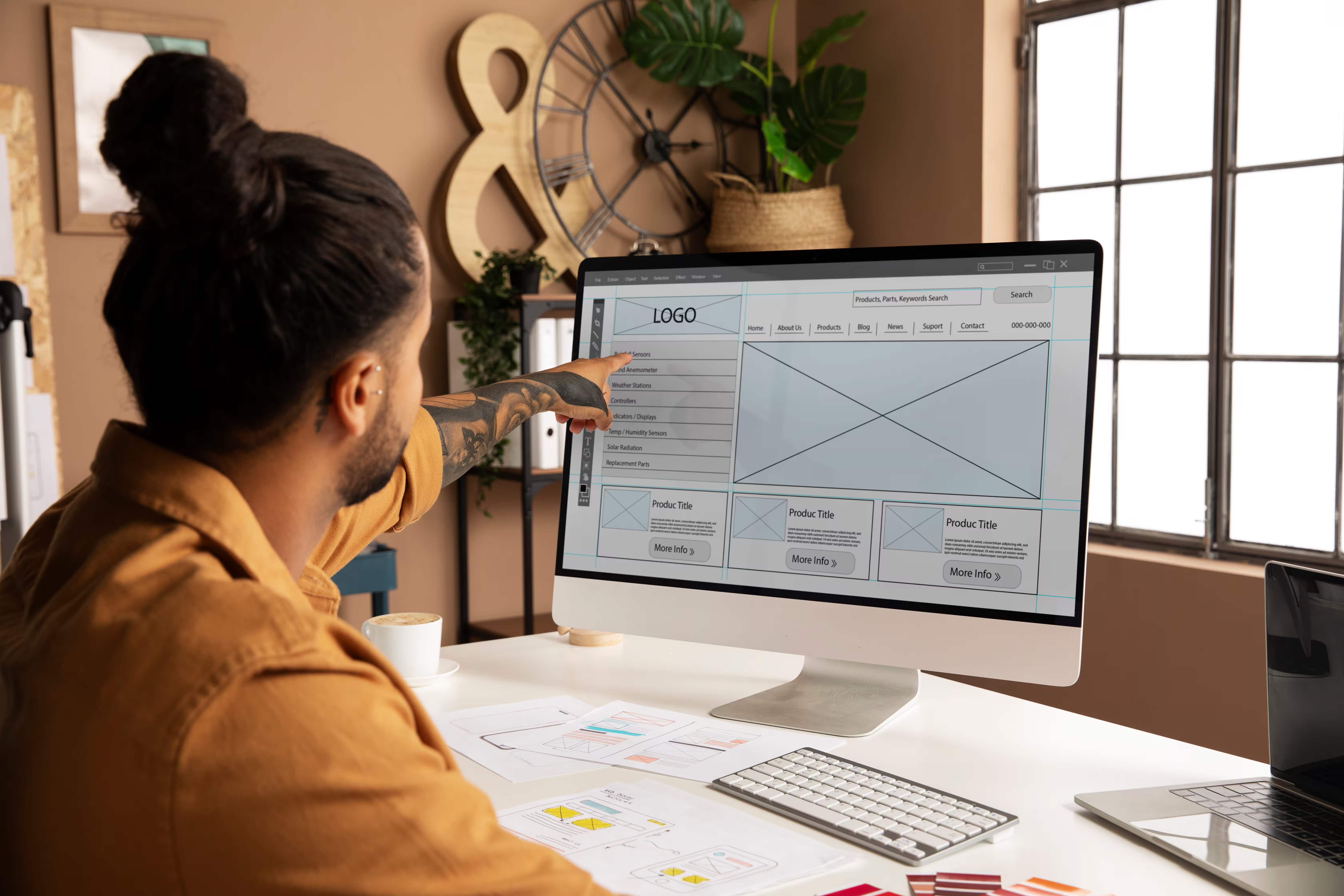And here is where Webflow custom code comes in handy: you can include it to feature other unique functionalities or designs. If you want to use custom code on your Webflow, this guide will instruct you how to pull that off.


Why use custom code in Webflow?
While Webflow’s visual designer is incredibly versatile, it does have its limits. Webflow custom code allows you to:
- Integrate third-party tools and widgets
- Add advanced interactivity and animations
- Customize styles beyond Webflow’s built-in options
- Fetch and display data from external APIs.
To truly build unique and functional websites, you need custom code. Custom code lets you do whatever it is you want whether that’s embedding a booking widget, creating interactive elements, and fine-tuning styles.
How to add custom code in Webflow
There are many ways to add your own Webflow custom code to your Webflow project. Here’s a breakdown of the options:
Using the Embed element
The Embed element is perfect for adding custom code to specific parts of a page:
- Drag and drop: From the Webflow Add panel, drag the Embed element onto your canvas.
- Paste your code: Add your custom HTML, CSS, or JavaScript directly into the code editor.
- Style the embed: Use Webflow’s designer tools to position and style the Embed element as needed.
This method is ideal for embedding custom widgets, forms, or interactive elements on specific sections of a page.
Adding code to Page settings
For code that applies to a single page:
- Open page settings: To edit a page, press on the gear icon next to the page you want to edit.
- Insert code: Add your Webflow custom code in the Header or Footer section, depending on when you want it to load.
- Save and publish: Save your changes and publish the site to see the code in action.
This approach is best for adding page-specific tracking scripts, meta tags, or JavaScript functionalities.
Adding code to Site settings
To apply Webflow custom code across your entire project:
- Access project settings: Navigate to the project’s settings dashboard.
- Go to custom code tab: Paste your code in the Header or Footer section.
- Publish the project: Your code will now be active on all pages of your site.
This method is particularly useful for global integrations like Google Analytics, chat widgets, or site-wide CSS.
Advanced Webflow custom code use cases
Custom code can unlock a wide range of advanced functionalities. Here are some exciting advanced integration use cases:
Interactive elements with JavaScript
Use JavaScript to create dynamic and interactive features such as accordions, modals, or carousels. Say, for instance, you may want to add event listeners to run animations or process user inputs. This approach is perfect for building engaging user experiences.
API data fetching
Leverage JavaScript to fetch data from external APIs and display it dynamically on your site. Use tools like fetch() or Axios to retrieve JSON data and inject it into your Webflow elements. Imagine building a weather widget or fetching real-time stock prices directly onto your website.
Advanced styling with CSS
Webflow custom code CSS allows you to go beyond Webflow’s design options. Add complex animations, custom fonts, or styles that aren’t natively supported, like multi-column layouts or gradient text. These customizations can significantly elevate the visual appeal of your site.
Integrating third-party libraries
Use custom code to integrate popular libraries like GSAP for animations, Chart.js for data visualization, or Three.js for 3D effects. These advanced integrations can add a professional touch to your website’s functionality.
Best practices for implementing Webflow custom code

To ensure your Webflow custom code works seamlessly, follow these best practices:
Ensuring code compatibility
- Create clean, standards-compliant HTML, CSS, and JavaScript code.
- Run your code through multiple browsers in order to make sure it works everywhere.
- Ensure your code aligns with Webflow’s structure to avoid conflicts.
Keeping Webflow custom code organized
- Use comments to document your code for easier understanding and maintenance.
- Keep a separate repository or file for frequently used code snippets.
- Group similar styles and scripts together for better readability.
Avoiding performance issues
- Minimize the size of your custom code and use compressed assets.
- Limit the use of heavy third-party libraries that could slow down your site.
- Lazy load custom scripts to improve initial page load times.
Troubleshooting and debugging Webflow custom code
Encountering issues with your Webflow custom code? Here’s how to troubleshoot effectively:
Common issues
- Code not working: Check for syntax errors, missing dependencies, or conflicts with Webflow’s features.
- Performance drops: Review your code for inefficiencies, like unoptimized loops or large file sizes.
- Visual errors: Ensure your custom styles don’t override critical Webflow classes.
Debugging tools
- Use browser developer tools to inspect and debug your code in real-time.
- Leverage online validators for HTML, CSS, and JavaScript to catch errors.
- Use tools like Postman to test API integrations before deploying them.
When to seek expert help
If you’re stuck, consider reaching out to a Webflow expert or developer. Sometimes, a fresh perspective or professional assistance can save you hours of frustration. Professional help can also ensure that your code is optimized for performance and compatibility.
In conclusion
The power of Webflow custom code is that with it you can supercharge your Webflow projects with endless possibilities of customization and functionality to build what you want, how you want! With best practices in place and effective troubleshooting, your custom code will be working nicely with your site. By using custom code, you can either add interactivity, fetch data, or, with advanced styles, reach your creative goals.
Frequently asked questions
How do I add custom code for a specific Webflow page?
To include custom code on a given Webflow page, go to the page settings and paste your code in the Header or Footer section. Publish the site to see how the code works. And save your changes.
What are some common custom code use cases in Webflow?
Custom code is often used for adding interactive elements with JavaScript, fetching external data through APIs, integrating third-party widgets, or applying advanced CSS styling for unique designs. It’s great for functionalities like carousels, custom forms, or data-driven content.
Can custom code slow down my Webflow site?
Yes, custom code can slow down your site if it’s poorly optimized, contains heavy scripts, or loads unnecessary libraries. Minimize code size, use lazy loading, and test performance regularly to avoid issues.




















